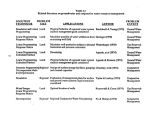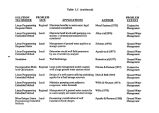| OCR Text |
Show terms of future water resource development. The analysis of trade- offs between surface and ground water use has been at the root of many a local controversy. Extensive surface water developments to supply the area are planned and under construction. While efforts to scientifically study groundwater development issues and relate them to potential surface water developments are of recent origin, a strong interest in such analyses has existed for quite some time. The modeling effort in this study was directed to focus on some of the issues relevant to the local regulatory agencies, and applications of the models developed were pursued at the level of data available with the co- operation of the Utah State Division of Water Resources, the Utah State Division of Water Rights, the U. S. G. S. district office and the Salt Lake County Water Conservancy district. Attempts were made to incorporate their suggestions into model development as well as model application. Parametric applications of the models developed were pursued with data from Salt Lake County. 1.2 Review of Modeling Literature Some of the literature relevant to the modeling efforts indulged in this study is reviewed in this section. A review of groundwater management models is first provided. This is relevant to the developments in Chapters 2 through 4. A review of some conjunctive use models follows. The relevant surface water literature is reviewed in Chapters 5 and 6 to allow for a more effective presentation. 1.2.1 Groundwater Management Models Groundwater management models reported in the literature may be classified as simulation or optimization, distributed parameter or lumped parameter, and hydraulic management or economic and policy analysis. The representation of the groundwater system is limited to a regional mass balance over time in lumped parameter models. This representation is inadequate for examining issues such as localized effects of withdrawals, water rights, and operation and development of a system of wells. Hydraulic management models focus on managing system stresses, such as groundwater withdrawals, and recharge rates. Economic factors may be explicitly or implicitly accounted for in satisfying an economic objective such as maximizing yield at minimum cost. The economic and policy analysis models extend the hydraulic management models to specifically analyze the economic and policy aspects of groundwater development. The use of distributed parameter, hydraulic management models appeared best suited to the objectives of this study. This section reviews some characteristics of representative distributed parameter, groundwater management, optimization models. Table 1.1 presents an annotated bibliography of some of the developments in groundwater management modeling. The reader is referred to Willis and Yeh ( 1987), and to Gorelick ( 1983) for reviews of distributed parameter ground water management modeling methods. Two approaches are used for modeling the groundwater system. The first, ' embedding', entails the inclusion of a numerical ( finite difference, or finite element) discretization of the partial differential equation of flow in the aquifer, as an explicit set of constraints in the optimization scheme. Solutions to models using this approach provide heads at each node of the grid used for discretizing the aquifer. The second approach, ' a unit response formulation', specifies only a set of responses at desired aquifer locations due to unit pumping at a well site. An assemblage of these responses, a response matrix, is then included in the management model. The embedding approach provides more detailed information, at the expense of much larger numerical problem size, and sometimes leads to an unstable numerical solution scheme. The response matrix approach, on the other hand provides information on response only at specified locations, while circumventing the problems associated with embedding solutions. 3 |











































































































































































































